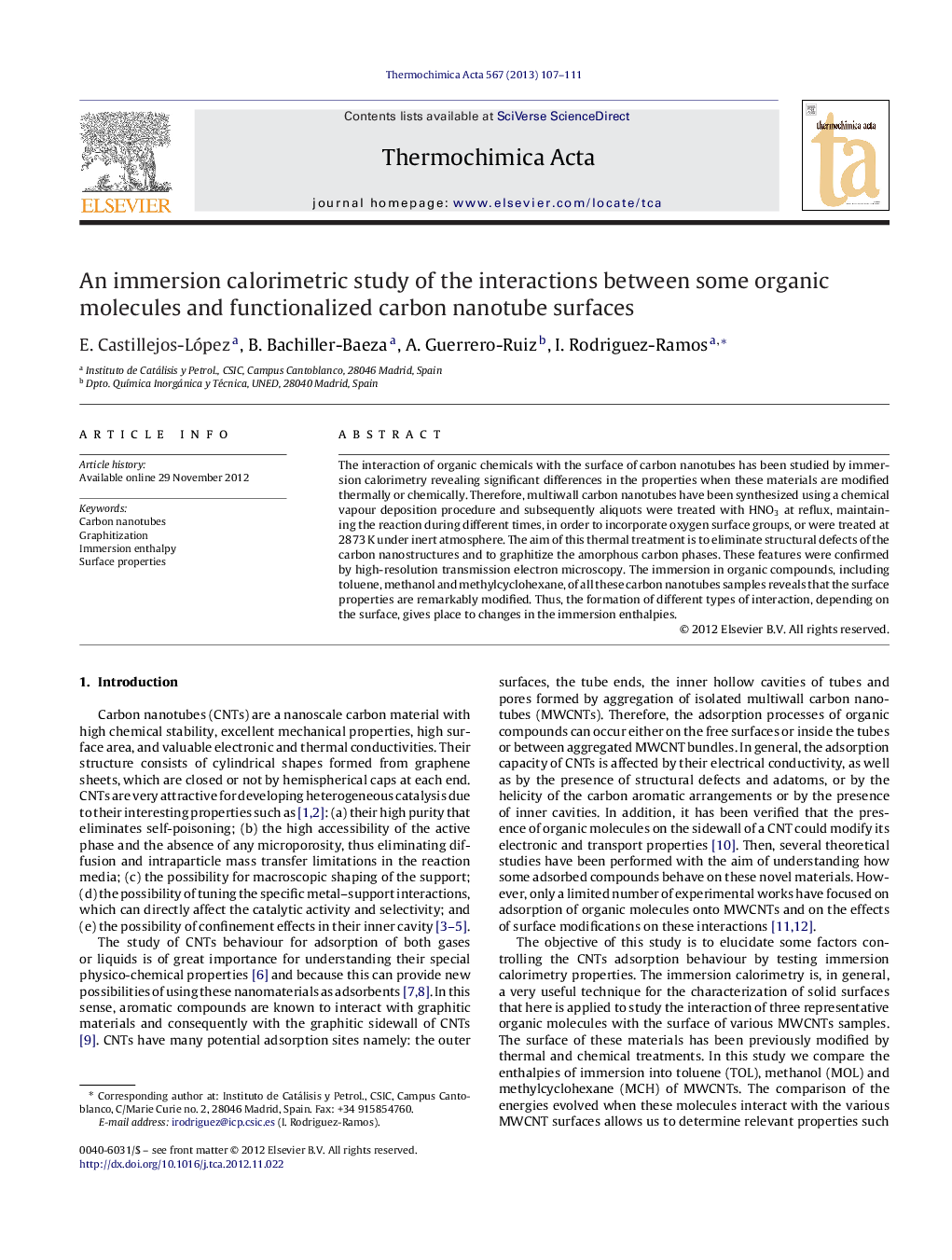| Article ID | Journal | Published Year | Pages | File Type |
|---|---|---|---|---|
| 673632 | Thermochimica Acta | 2013 | 5 Pages |
The interaction of organic chemicals with the surface of carbon nanotubes has been studied by immersion calorimetry revealing significant differences in the properties when these materials are modified thermally or chemically. Therefore, multiwall carbon nanotubes have been synthesized using a chemical vapour deposition procedure and subsequently aliquots were treated with HNO3 at reflux, maintaining the reaction during different times, in order to incorporate oxygen surface groups, or were treated at 2873 K under inert atmosphere. The aim of this thermal treatment is to eliminate structural defects of the carbon nanostructures and to graphitize the amorphous carbon phases. These features were confirmed by high-resolution transmission electron microscopy. The immersion in organic compounds, including toluene, methanol and methylcyclohexane, of all these carbon nanotubes samples reveals that the surface properties are remarkably modified. Thus, the formation of different types of interaction, depending on the surface, gives place to changes in the immersion enthalpies.
► The interaction of organic chemicals with the surface of modified CNTs was studied. ► Specific π–π interactions between graphitic CNTs and toluene have been considered. ► Confinement effects in CNTs increase the adsorption strength of aromatic compounds. ► Methanol molecules form H-bonds with the oxygen functional groups on CNT surfaces.
